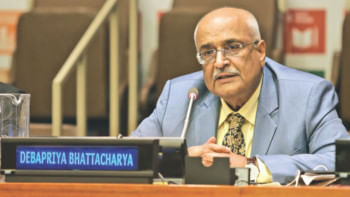Time ripe to own up to weaknesses

The Bangladesh economy faced extended economic distress after recovering partially from the pandemic before facing the cost-of-living increases and external payment imbalances. Economic activity slowed in 2023 with persistently high inflation and erosion of external buffers.
The experiment with unorthodox macroeconomic policy response to global shocks have so far proven counterproductive. We seem to move in ways that we have tried before but haven't worked.
Foreign exchange and energy shortages constrained productivity and employment. Large manufacturing sectors such as garments, textile, pharmaceuticals, steel, tanneries, shipbreaking and chemicals heavily depend on imported raw materials.
The lack of a relationship between the tapering of global shocks and macroeconomic stability in Bangladesh shows there is a lot more to it than just an adverse change in the global economic climate.
The year started with several administered price adjustments and tighter controls on foreign exchange prices and volumes. The Bangladesh Bank backed BAFEDA-ABB model devalued the taka at periodic intervals. A de facto reduction in current account convertibility came into place with tighter export proceed surrender requirements and withholding payments on various invisibles.
Bangladesh Bank monetised government borrowing and stuck to the 9 percent lending rate cap until July, when implementation of a timebound macro-structural reform programme supported by the IMF kicked in.
Policies moved better in the second half of 2023, albeit not in all key fronts. The central bank changed the monetary policy operating model, bringing greater flexibility to the money market and more frequent crawl in bank lending rates. It put a lid on deficit monetisation.
The operating dynamics of the exchange rate regime exhibited several mood swings. The culture of impunity in loan default lived well. Markets adjusted to the higher transaction costs of trading at prices different from the de jure prices set by the regulators in the foreign exchange and financial markets.
The evidence so far on how these policies fared confirms the a priori textbook like predictions.
The economy at the close of 2023 is notably weaker. Inflation could not be tamed, the external bill payments remained problematic, transaction costs in foreign exchange trade increased, remittances through formal channels crashed, private short-term external debt rollovers turned red, forex reserves reached new lows, and non-performing loans sloped up.
Cat and mouse games gained new life with market policing based on superficial market intelligence. Rationing tilted the playing fielding towards the connected.
One hopes the long overdue policy corrections will not procrastinate on the assumption that the global headwinds will fade sooner rather than later. This assumption did not serve us well in 2023. The time is ripe to own up to the weaknesses of our unorthodox policy models and frameworks.
The author is an economist


 For all latest news, follow The Daily Star's Google News channel.
For all latest news, follow The Daily Star's Google News channel. 



Comments